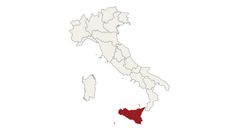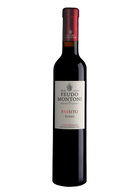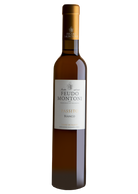Wine from Sicily
There is not a population of ancient Sicily that has not successfully cultivated vines. The Greeks, of course, but also the Elymians, the Siculians, and of course the Phoenicians. Here were born some of the most ancient wines in the world, usually passiti or in any case sweet wines, just like in Syracuse area. Here Arabs revived the culture of raisins, in a magical interweaving of cultures. And here was born the greatest Italian fortified wine, Marsala. For thirty years now, Sicily has confirmed itself as one of the regions of the South best equipped for the new challenges of modern viticulture in step with modern times. Dominated by a dry and locally arid Mediterranean climate, except for the inland extremities, Sicily has volcanic soils in the eastern areas and all the smaller islands, clayey-calcareous in the centre and north, and ferrous-clayey in the west.
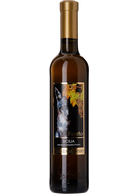
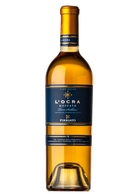
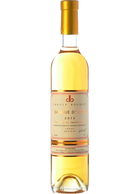
Carole Bouquet Passito di Pantelleria Sangue d'Oro 2021 (0.5 L)

Hauner Malvasia delle Lipari Passito Selezione Carlo Hauner 2018 (0.5 L)

Hauner Malvasia delle Lipari Passito 2019 (0.5 L)
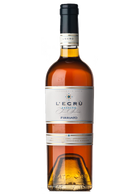
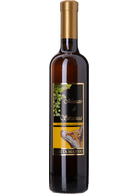

Caravaglio Malvasia delle Lipari Passito 2022 (0.5 L)
BIO

Paola Lantieri Malvasia delle Lipari 2012 (0.5 L)
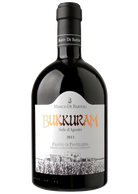
De Bartoli Passito di Pantelleria Bukkuram Sole d'Agosto 2022
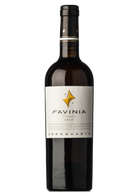



Pellegrino Passito di Pantelleria Nes 2020 (0.5 L)
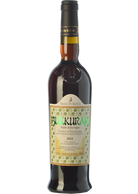
De Bartoli Passito di Pantelleria Bukkuram Padre della Vigna 2019 (0.5 L)

Donnafugata Passito di Pantelleria Ben Ryé 2022
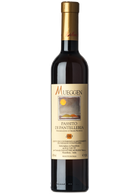
Murana Passito di Pantelleria Mueggen 2015 (0.5 L)
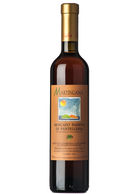
Murana Passito di Pantelleria Martingana 2010 (0.5 L)


D'Amico Malvasia delle Lipari 2013 (0.5 L)
BIO


Sicily
There is not a population of ancient Sicily that has not successfully cultivated vines. The Greeks, of course, but also the Elymians, the Siculians, and of course the Phoenicians. Here were born some of the most ancient wines in the world, usually passiti or in any case sweet wines, just like in Syracuse area. Here Arabs revived the culture of raisins, in a magical interweaving of cultures. And here was born the greatest Italian fortified wine, Marsala. For thirty years now, Sicily has confirmed itself as one of the regions of the South best equipped for the new challenges of modern viticulture in step with modern times. Dominated by a dry and locally arid Mediterranean climate, except for the inland extremities, Sicily has volcanic soils in the eastern areas and all the smaller islands, clayey-calcareous in the centre and north, and ferrous-clayey in the west.
The most representative red grape of the island is undoubtedly nero d'Avola. With good tannin, great acidity, medium structure, Nero d'Avola gives fruity wines with distinct notes of cherry, especially when young. It is present all over the island except Etna: considered a classic in the area of Noto and Avola, where it takes on sapid and spicy traits due to the calcareous soils, it expresses itself with greater opulence towards the west, in the area of Butera, on marly soils, and with greater mineral crunchiness in the Trapani area. It is also highly appreciated in blends with international varieties, which in Sicily, often even as a single blend, have been very successful in recent years, particularly Cabernet Sauvignon and Syrah. Another red grape that can be considered typical of the island is pignatello or perricone, fruity and easy to drink.
White wines occupy about 75% of the regional product and a very respectful number of vines. The most representative is the catarratto, a grape that gives wines which are very balanced between scents, sapidity and good structure. More markedly aromatic is inzolia, the Tuscan ansonica, with balsamic, resinous, iodine, citrus and tropical notes, while grillo is usually of excellent concentration, and is sapid and marine, also ideal for the production of Marsala. Among the aromatic ones, the Moscato di Alessandria obviously stands out, here called zibibbo, an excellent dry but as unforgettable as a passito in Pantelleria. As for the international ones, in Sicily chardonnay behaves very well, and is usually suitable for lengthy aging.
A land where ancient farming systems such as the bush-trained vines and historical methods of vinification and ageing survive, Sicily appears fragmented into small and often insignificant denominations. In the Trapani area, which alone covers half of the region's vineyards, the soils, often red with iron and minerals, are home to the DOC Delia Nivolelli (with a memorable aged syrah), Erice, Alcamo (the kingdom of an excellent pure white wine) and of course Marsala.
Marsala can be produced almost throughout the province of Trapani, but the best and most historic wineries are in the very city that gives its name to the denomination. Ancient cellars that perpetuate the tradition of fortification with wine alcohol from grapes, generally, grillo (for Marsala "gold" and "amber") or perricone (for the "ruby" type). Born, like all the biggest liqueurs of the late eighteenth century, from the need to transport stowed wine to English ports from the production centres of southern Europe, Marsala, which is made with a technique similar to the sherry "solera method", i.e. aging in not-full barrels, can be, depending on the dosage, dry, semi-dry or sweet. The most austere, dry and uncompromising is the "vergine", which can spend more than ten years in the cellar: ethereal, walnut husk, balsamic, tertiary and candied fruit notes alternate according to the different types.
Other important denominations belong to western Sicily. Along the heights of the hinterland of Palermo lies the Monreale DOC, at the foot of the wonderful mosaics of the Duomo. Lands that give an elegant and fragrant inzolia, of noticeable freshness. The most significant DOC of the Belice valley is Contessa Entellina, towards the Agrigento area, which stands out for its modern red wines, with a blend of Nero d'Avola and international grapes such as Cabernet Sauvignon. Of excellent quality, thanks to the saline contribution of the sea and mineral soils, are the whites of Menfi DOC, including inzolia, chardonnay and a splendid interpretation of fiano.
More geographically limited and representative are the appellations of Eastern Sicily, where the ampelographic panorama changes quite a bit. The noblest area is certainly that of Etna: volcanic sands, ancient volcanic material and steep rocks produce one of the most heroic viticulture in the world, with steep terraces and vineyards, often bush-trained, free standing, as, in these parts, the phylloxera itself has taken root very little. Centenarian vines and crus, or rather mythical districts like San Lorenzo, Barbagalli, Barbabecchi give, up to a thousand metres above sea level, some of the thinnest, tense, elegant reds in the world. This is due to a variety, the nerello mascalese, which excels for its fine tannin, graceful structure, class and olfactory complexity, and exceptional longevity. Not infrequently it is vinified with a small amount of nerello cappuccio, more colourful and spicy, softer but less long-lived, often aged in wood - large or small at the discretion of the producer's style - and usually also in rosé, with splendid results for rigour, cleanliness and complexity. The exceptional day/nights temperature differences of the area gives elegance to the reds, which prevail on the north side of the volcano, and to the whites, which mainly populate the southern side. This is the kingdom of the carricante, a concentrate of minerality and sapidity that translates in the chalice into notes of flint and very strong acidity.
The red grapes of Etna themselves are the protagonists of the excellent DOC wines of Messina: Faro, where nerelli grapes acquire an interesting structure and an austere vocation for ageing, with soft, velvety tannins, and Mamertino, one of the oldest wine areas in the world, where nerelli wines are often added to nocera, a native grape of the Milazzo area that gives a rather rustic but pleasantly drinkable red wine. The nerellis are also the most representative reds of the Aeolian Islands, volcanic, although between Salina and Lipari the typical local malvasia excels, both dry, of great minerality to balance the subtle aroma, and in the passito version, protected by the Malvasia delle Lipari DOC, characterised by notes of dehydrated apricot, delicately salty, pleasantly ethereal and spicy, with sulphurous puffs. The autochthonous red is the corinto nero: try it for its beautiful fruit and compulsive drinkability, even as an aperitif.
Homeland of the Nero d'Avola, Syracuse is remembered above all for its sweet white passito Muscat wines: Moscato di Noto and Moscato di Siracusa, wines of great charm, with an ancient flavour and beautifully vegetal and balsamic notes. The Ragusa wine-growing and wine-producing panorama is more defined, which, especially in the Vittoria district, is the land of frappato: a red grape with splendid fruity and mineral scents and an elegant and delicate structure. Frappato is vinified in single variety, but also in blends with Nero d'Avola: in this case it can give life to the only DOCG on the island, Cerasuolo di Vittoria.
The Pantelleria DOC, which occupies the volcanic island off the coast of Agrigento, deserves a special mention. Here, on land hollowed out by the winds and craters, or on heroic terraces overlooking the sea, zibibbo is cultivated in ancient bush-trained saplings which are often free standing. A type of muscatel with a slight aromaticity, the zibibbo is vinified dry for a white wine of extreme iodine mineral content, or sweet, both in late harvest and after withering: it is the Passito di Pantelleria, a UNESCO World Heritage wine. Whipped by the wind and the sun, the bunches wither for a variable period depending on the style of the producer. According to an ancient technique, some vinify the passito using a balance of wine from fresh grapes to ensure the right acidity to the product. Then the aging, which can take place in steel or wood and can last even a decade, sometimes with moderately oxidative and decidedly salty results to accompany the characteristic note of dried apricot which, with its great taste-olfactory concentration, is the trademark of this flagship of Italian wine.
